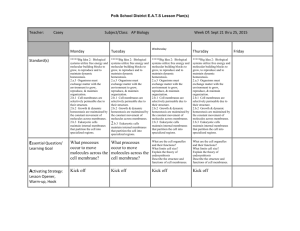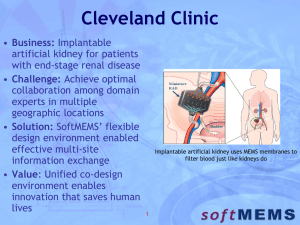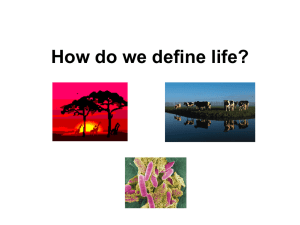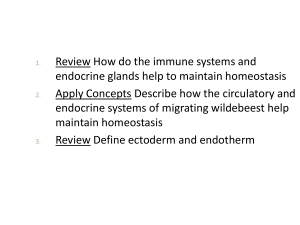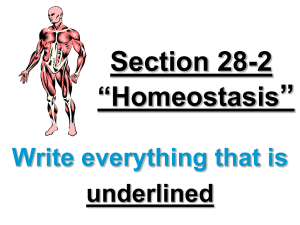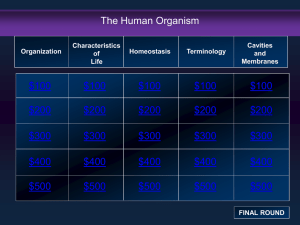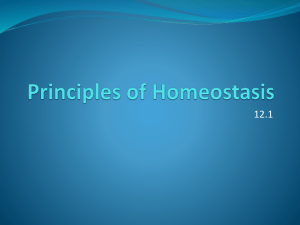2. Biological systems utilize free energy and molecular building
advertisement
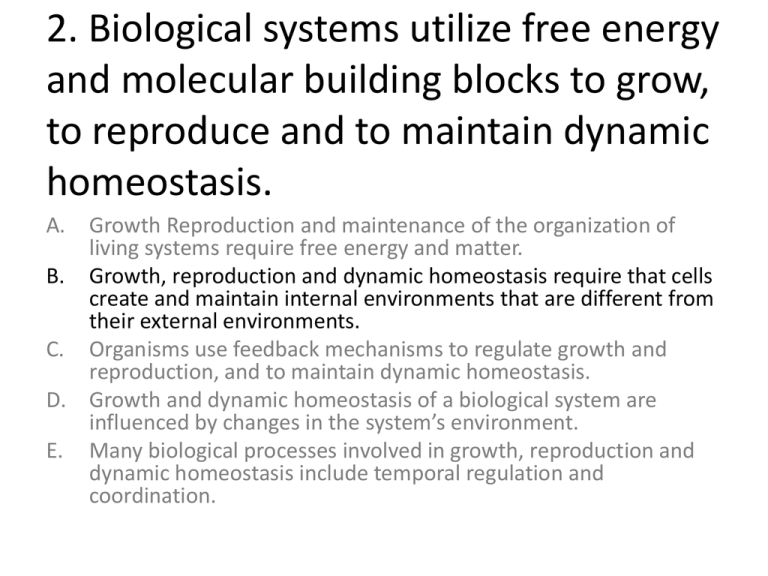
2. Biological systems utilize free energy and molecular building blocks to grow, to reproduce and to maintain dynamic homeostasis. A. Growth Reproduction and maintenance of the organization of living systems require free energy and matter. B. Growth, reproduction and dynamic homeostasis require that cells create and maintain internal environments that are different from their external environments. C. Organisms use feedback mechanisms to regulate growth and reproduction, and to maintain dynamic homeostasis. D. Growth and dynamic homeostasis of a biological system are influenced by changes in the system’s environment. E. Many biological processes involved in growth, reproduction and dynamic homeostasis include temporal regulation and coordination. 2.B. Growth, reproduction and dynamic homeostasis require that cells create and maintain internal environments that are different from their external environments. 1. Cell membranes are selectively permeable due to their structure. 2. Growth and dynamic homeostasis are maintained by the constant movement of molecules across membranes. 3. Eukaryotic cell maintain internal membranes that partition the cell into specialized regions. 2.B.1. Cell membranes are selectively permeable due to their structure. a. Cell membranes separate the internal environment of the cell from the external environment. b. Selective permeability is a direct consequence of membrane structure, as described by the fluid mosaic model. c. Cell walls provide a structural boundary, as well as a permeability barrier for some substances to the internal environments. 2.B. Growth, reproduction and dynamic homeostasis require that cells create and maintain internal environments that are different from their external environments. 1. Cell membranes are selectively permeable due to their structure. 2. Growth and dynamic homeostasis are maintained by the constant movement of molecules across membranes. 3. Eukaryotic cell maintain internal membranes that partition the cell into specialized regions. 2.B.2. Growth and dynamic homeostasis are maintained by the constant movement of molecules across membranes. a. Passive transport does not require the input of metabolic energy; the net movement of molecules is from high concentration to low concentration. b. Active transport requires free energy to move molecules from regions of low concentration to regions of high concentration. c. The processes of endocytosis and exocytosis move large molecules from the external environment to the internal environment and vice versa, respectively. 2.B. Growth, reproduction and dynamic homeostasis require that cells create and maintain internal environments that are different from their external environments. 1. Cell membranes are selectively permeable due to their structure. 2. Growth and dynamic homeostasis are maintained by the constant movement of molecules across membranes. 3. Eukaryotic cell maintain internal membranes that partition the cell into specialized regions. 2.B.3. Eukaryotic cell maintain internal membranes that partition the cell into specialized regions. a. Internal membranes facilitate cellular processes by minimizing competing interactions and by increasing surface area where reactions can occur. b. Membranes and membrane-bound organelles in eukaryotic cells localize (compartmentalize) intracellular metabolic processes and specific enzymatic reactions. c. Archaea and Bacteria generally lack internal membranes and organelles and have a cell wall.
